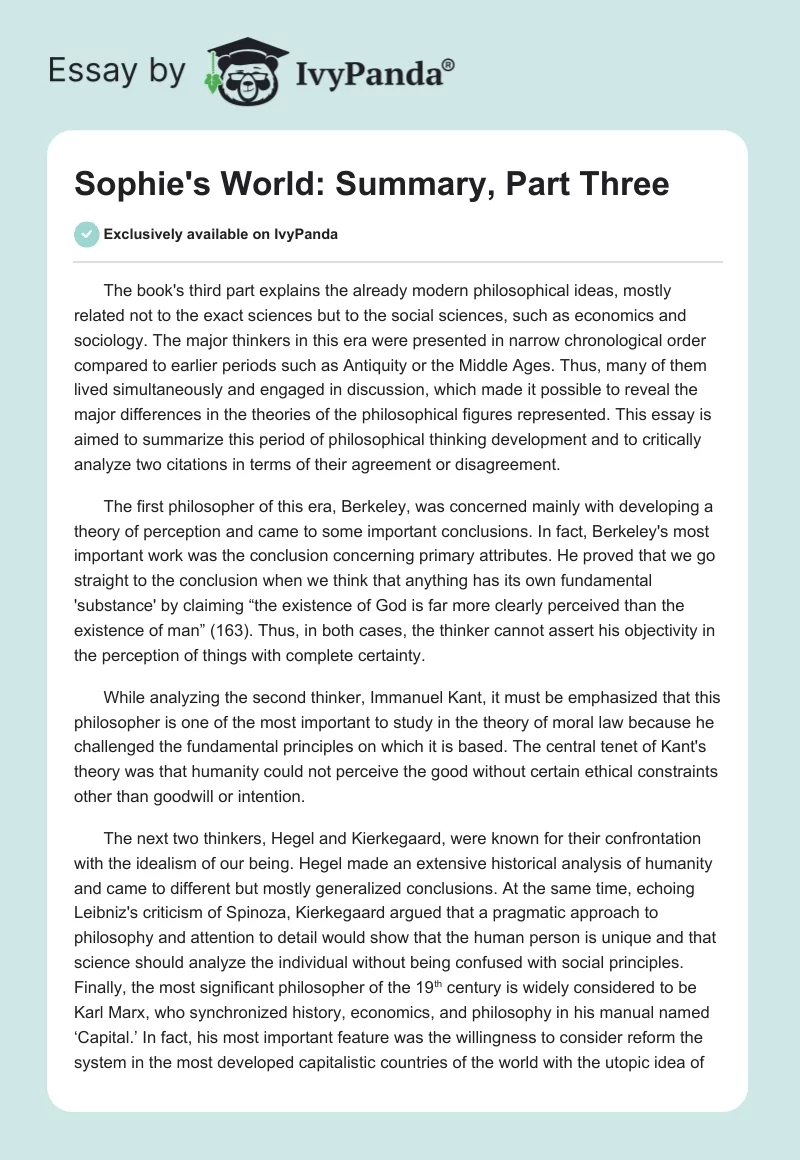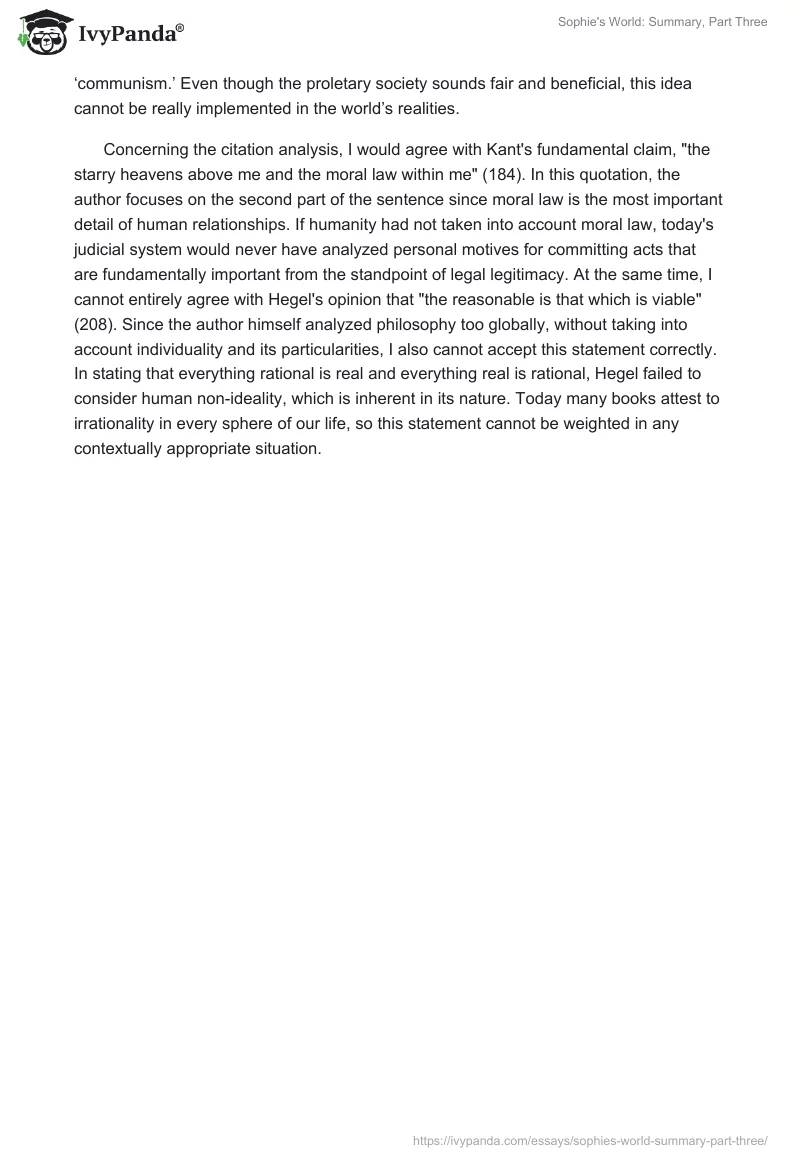The book’s third part explains the already modern philosophical ideas, mostly related not to the exact sciences but to the social sciences, such as economics and sociology. The major thinkers in this era were presented in narrow chronological order compared to earlier periods such as Antiquity or the Middle Ages. Thus, many of them lived simultaneously and engaged in discussion, which made it possible to reveal the major differences in the theories of the philosophical figures represented. This essay is aimed to summarize this period of philosophical thinking development and to critically analyze two citations in terms of their agreement or disagreement.
The first philosopher of this era, Berkeley, was concerned mainly with developing a theory of perception and came to some important conclusions. In fact, Berkeley’s most important work was the conclusion concerning primary attributes. He proved that we go straight to the conclusion when we think that anything has its own fundamental ‘substance’ by claiming “the existence of God is far more clearly perceived than the existence of man” (163). Thus, in both cases, the thinker cannot assert his objectivity in the perception of things with complete certainty.
While analyzing the second thinker, Immanuel Kant, it must be emphasized that this philosopher is one of the most important to study in the theory of moral law because he challenged the fundamental principles on which it is based. The central tenet of Kant’s theory was that humanity could not perceive the good without certain ethical constraints other than goodwill or intention.
The next two thinkers, Hegel and Kierkegaard, were known for their confrontation with the idealism of our being. Hegel made an extensive historical analysis of humanity and came to different but mostly generalized conclusions. At the same time, echoing Leibniz’s criticism of Spinoza, Kierkegaard argued that a pragmatic approach to philosophy and attention to detail would show that the human person is unique and that science should analyze the individual without being confused with social principles. Finally, the most significant philosopher of the 19th century is widely considered to be Karl Marx, who synchronized history, economics, and philosophy in his manual named ‘Capital.’ In fact, his most important feature was the willingness to consider reform the system in the most developed capitalistic countries of the world with the utopic idea of ‘communism.’ Even though the proletary society sounds fair and beneficial, this idea cannot be really implemented in the world’s realities.
Concerning the citation analysis, I would agree with Kant’s fundamental claim, “the starry heavens above me and the moral law within me” (184). In this quotation, the author focuses on the second part of the sentence since moral law is the most important detail of human relationships. If humanity had not taken into account moral law, today’s judicial system would never have analyzed personal motives for committing acts that are fundamentally important from the standpoint of legal legitimacy. At the same time, I cannot entirely agree with Hegel’s opinion that “the reasonable is that which is viable” (208). Since the author himself analyzed philosophy too globally, without taking into account individuality and its particularities, I also cannot accept this statement correctly. In stating that everything rational is real and everything real is rational, Hegel failed to consider human non-ideality, which is inherent in its nature. Today many books attest to irrationality in every sphere of our life, so this statement cannot be weighted in any contextually appropriate situation.


